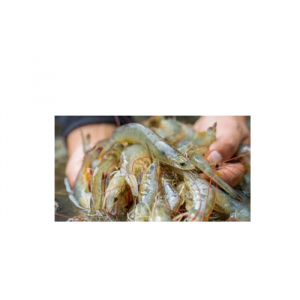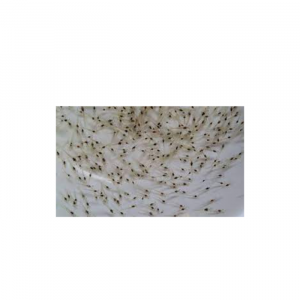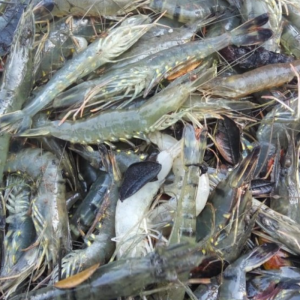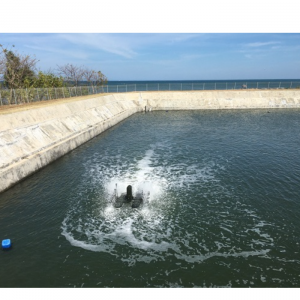
Harnessing Big Data to Fight Shrimp Diseases and Allay Investor Fears
| Thu, 26 Dec 2019 - 09:18
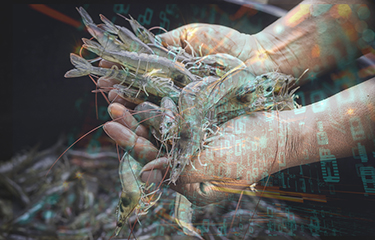
Diseases cost shrimp farmers around the world billions of dollars every year, while scaring off potential investors and posing risks to farmers' livelihoods.
In Southeast Asia, more than 90 percent of shrimp farms have at least one dormant disease living in the water, such as white spot disease, white feces disease, and hepatopancreatic microsporidiosis (HPM), according to the Sustainable Trade Initiative (IDH), a Dutch organization seeks to accelerate sustainable investments.
But reducing disease could help shrimp farmers attract investors. A new partnership between IDH and Indonesian aquaculture data services provider JALA seeks to make shrimp farming more investor-friendly, environmentally sustainable, and profitable for farmers. By leveraging big data, the project aims to pinpoint the causes of disease outbreaks, reduce their frequency, and improve the survival rates of farmed shrimp.
"Farmers need to adapt the way of farming due to various challenges that continuously update every month or week," JALA CEO Liris Maduningtyas told SeafoodSource. "Technologies help them in a way that they can improve to mitigate most of the farming risks."
Two-thousand farmers use JALA’s in-water monitoring device to collect data about farming conditions, such as salinity, temperature, and acidity in 5,000 ponds across Southeast Asia. JALA analyzes the data to predict shrimp growth and optimize harvest timing, providing farm management tools and decision support to farmers.
The technology is simple, easy to use, cheap, and has easily portable sensors — all of which matters for shrimp farmers using it on their operations in Indonesia.
Shrimp farmers currently don't know whether water quality correlates with certain diseases, but Maduningtyas believes that trends will become more visible as more farmers use JALA and provide more data. JALA and IDH has partnered with aquatic epidemiologists at the University of Prince Edward Island to analyze data to study how disease spreads through shrimp populations and prevent outbreaks.
"The first question we need to answer is: What type of data correlates with a certain type of disease? Then, the next question is how to project this," Maduningtyas said.
Outbreaks cut into income, cause inputs to be wasted, increase water pollution, and lead to excessive antibiotic use. Greater survival means less wasted feed and more efficient use of natural resources, allowing shrimp farming to become more profitable. Knowing how disease spreads will allow shrimp farmers to better prevent it.
“Individual farmers have information limited to their own farm, and it is almost impossible to tell if events in one cycle will happen in future cycles,” the University of Prince Edward Island's Krishna Thakur said. “Epidemiology investigations applied to many farms and through multiple productions, cycles can help identify practices or conditions that are related to disease occurrence, providing all participants with information for decisions that improve overall survival and productivity.”
Reducing disease risk will also make shrimp farming more appealing to investors, according to IDH Aquaculture Program Officer Lisa van Wageningen.
"Disease occurrence threatens farmers' long-term business. As a result, investors are reluctant to make long-term sustainable investments,” van Wageningen told SeafoodSource, adding that diseases have cascading ramifications. “Diseases do not only have negative economic consequences for farmers. Diseases have negative environmental consequences, too, as they result in the waste of inputs and can potentially cause irresponsible practices such as the excessive use of antimicrobials.”
Perceptions that aquaculture is a risky sector have prevented investors from taking full advantage of its potential, van Wageningen said. IDH’s work to improve health management is intended to make the sector less risky, and more investable and insurable. Other aquaculture sectors beyond shrimp would also benefit from better disease management since it’s a key issue, van Wageningen added.
To help investors grow more familiar with the sector, IDH has published investment guidelines for shrimp culture in Indonesia that describe how to mitigate risks. The organization is currently writing an investment framework that goes beyond Indonesia and shrimp and will apply to the sector more broadly.
“The beauty of adopting a data-driven approach to controlling diseases is not only that risks for outbreaks can be reduced, but also, that risks can be quantified and a track record can be established, hence making investors more comfortable in investing in those farms,” IDH Aquaculture Program Director Flavio Corsin said in a statement. “Better management, less diseases, and easier access to investment: Three birds with one stone.”
IDH sees major investment opportunities, since aquaculture is one of the world's fastest-growing food production systems. The growth of the middle class in Asia and Africa portends a shift toward more protein-rich diets, but because of a lack of available land for livestock and a need to lower greenhouse gas emissions, alternatives to land-based animal protein will be needed.
"The growth in available protein will have to come from efficient systems such as farmed fish,” van Wageningen said. “The aquaculture sector has a lower carbon footprint compared to other livestock sectors, and requires less water, energy, feed, and fuel."
Source: Seafood Source













